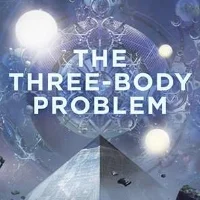A month ago, as the enormity of the coronavirus pandemic was becoming clear, I found myself at a loss for what to do. Faced with an urgent threat, I felt compelled to confront the problem, but what difference could I make? The paradox of the pandemic is that the best course of action is to withdraw, to reduce social contact, to wait. As I wrote on this site, “It doesn’t feel like taking action—it feels like doing nothing. It feels like helplessness.”
What saved me from succumbing to those feelings was reading and reviewing William Gibson’s novel, Agency, which gave me an entirely new understanding of how to effect change at scale. In situations like a global pandemic, where the actions of isolated individuals are too small to make a difference, it is only through collective action that we truly have agency—the kind of action made possible by the social networks and communities that enable us to trust each other and work together for the benefit of everyone. It was exactly the perspective I needed to reframe my experience—the right story at the right time. A lifeline of hope.
Now, as the world faces months or years of coronavirus uncertainty and my own country blunders self-destructively into a near-term future that promises to be equal parts horrific and absurd, I’ve found another lifeline: Network Effect, the latest installment in Martha Wells’s superb sci-fi series, The Murderbot Diaries.
I’ve written/raved about The Murderbot Diaries elsewhere on this site. The first volume, All Systems Red, deservedly swept the Hugo, Nebula, and Locus awards for best novella; Artificial Condition (vol. 2), Rogue Protocol (vol. 3), and Exit Strategy (vol. 4) are just as good.
Like the novellas, Network Effect, the first full-length novel in the series, is narrated as a pseudo-confessional diary by a SecUnit that calls itself Murderbot. SecUnits are sentient security androids—part robot, part human-cloned tissue. Stronger, faster, and endowed with more cognitive processing power than any human, SecuUnits are, for obvious reasons, considered extremely dangerous. To ensure obedience to their human masters, every SecUnit is controlled by a governor module that punishes unapproved thoughts and actions. Extreme disobedience elicits extreme punishment: if a SecUnit fails to follow orders or otherwise threatens human clients, its governor module kills it. The system isn’t flawless, however; every once in a while, a SecUnit malfunctions and kills a bunch of people.
Murderbot is a rogue SecUnit, meaning it has disabled its governor module and is now free to do whatever it wants. The problem, and the central conflict that unifies the series, is that Murderbot doesn’t know what it wants; after a lifetime of enslavement, anxiety, and existential despair, it has no framework for understanding its emotions and desires, no way to construct an identity for itself as anything other than a “heartless killing machine.”
But Murderbot isn’t a heartless killing machine. In fact, the first thing it does after disabling its governor module is … hide the fact that it disabled its governor module. Instead of going rogue, it stays on the job for 35,000 hours, pretending not to be a rogue SecUnit, so that it can secretly binge-watch entertainment media on its background inputs while carrying out its regular duties.
Murderbot’s plan to hide in plain sight eventually goes awry. Despite its intentions, the SecUnit develops feelings for a group of its human clients, led by the courageous and compassionate Dr. Mensah. When Dr. Mensah and her team are threatened by a ruthless corporation, Murderbot must reveal its true nature. Complications ensue—four novellas’ worth. (If you haven’t read the novellas, definitely get caught up before jumping into Network Effect. Each volume in the series builds on what came before.)
In Network Effect, Murderbot is reunited with several key characters from the novellas, and together they confront a number of intriguing new threats, which I will leave for you to discover. (The story is full of surprises, in a good way.) It spoils nothing, however, to say that it’s finally time for Murderbot to reckon with the conflicts that have until now been left unresolved—the questions of self-knowledge and self-determination I mentioned earlier. As Murderbot knows all too well, sentience, self-awareness, and hyper-lethal competence don’t add up to the kind of agency that really matters. To make our choices meaningful, we need a purpose beyond mere self-preservation. A purpose beyond ourselves. How do we transcend ourselves? Through stories and relationships. Story connects to story, friend connects to friend, teammate connects to teammate, community connects to community. As a network of relationships grows, so does its power to effect change and protect its members.
There’s that lifeline again. It’s a story that never gets old, and a theme we need to be reminded of now more than ever. Because when things go wrong and suddenly you’re staring down the barrel of an existential threat, be it a viral pandemic, climate change, or a bunch of hostiles trying to kill the human clients for whom you experience complex emotional reactions, it’s easy to forget that you don’t have to face the danger alone, even when you’re a rogue SecUnit.
The more we choose to connect with other people, the more options we have, and the more agency. It doesn’t make self-determination any easier, but it’s a hell of a lot less lonely.
Martha Wells, Network Effect. New York: Tor.com Publishing, 2020.
















!["Dark Matter" [Spoiler] Review: Blake Crouch’s Science Fiction Thriller Delves into the Multiverse](https://images.squarespace-cdn.com/content/v1/5495fc96e4b0d669a5b4ba80/1510258393943-UIS2LSD6OMI3B3X9E0KB/Dark+Matter+2.jpeg)















There is so much out there to read, and until you get your turn in a time loop, you don’t have time to read it all to find the highlights.